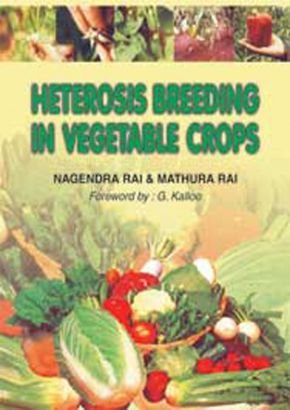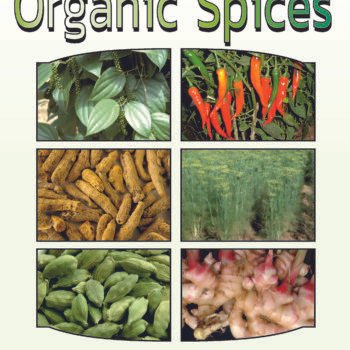| Vegetable production in our country is still dominated by locally available genotypes or open-pollinated varieties, which are low-yielding and susceptible to various insect pests and diseases. This is largely due to farmers' lack of knowledge and poor extension services. Therefore, there is a need to cultivate vegetable hybrids to increase production, productivity, and quality. The development of hybrids from existing varieties plays a crucial role not only in increasing productivity but also in combating several problems faced by farmers. To achieve these objectives, the authors have made an effort to provide information on the development of vegetable hybrids, both theoretically and practically, in the form of a book entitled "Heterosis Breeding in Vegetable Crops." This publication contains 17 chapters in two sections. The first section includes 10 chapters related to the theoretical aspects of heterosis, such as (i) Introduction to Heterosis, (ii) Basis of Heterosis, (iii) Commercial Exploitation of Heterosis, (iv) Reproduction, Pollen, and Pollen Biotechnology, (v) Population Improvement of Parents/Hybrids Varieties, (vi) Genetic Purity Testing of Hybrids, (vii) Hybrid Varieties Testing and Release Procedures in India, (viii) Biotechnology and Vegetable Improvement, (ix) Intellectual Property Right-related Issues in Hybrid Technology, and (x) Economics, Import, and Export. The second section consists of practical aspects of hybrid seed production and includes seven chapters on different vegetable crops, such as (xi) Solanaceous Crops—Tomato, Brinjal, Chilli, and Bell Pepper, (xii) Malvaceous Crops—Okra, (xiii) Cole Crops—Cabbage and Cauliflower, (xiv) Cucurbitaceous Crops—Bitter Gourd, Bottle Gourd, Cucumber, Muskmelon, Watermelon, Pumpkin, Ridged and Smooth Gourd, (xv) Root Crops—Carrot, (xvi) Bulb Crops—Onion, and (xvii) Hints for Hybrid Cultivation. All the chapters include references, illustrations, and tables. The publication also contains characteristics of national released hybrids with colored photographs, which would be useful to teachers, scientists, students, extension workers, vegetable industry, and farmers in our country. |
| author | Nagendra Rai & Mathura Rai |
|---|---|
| publisher | nipa |
| language | English |
| pages | 564 |


















